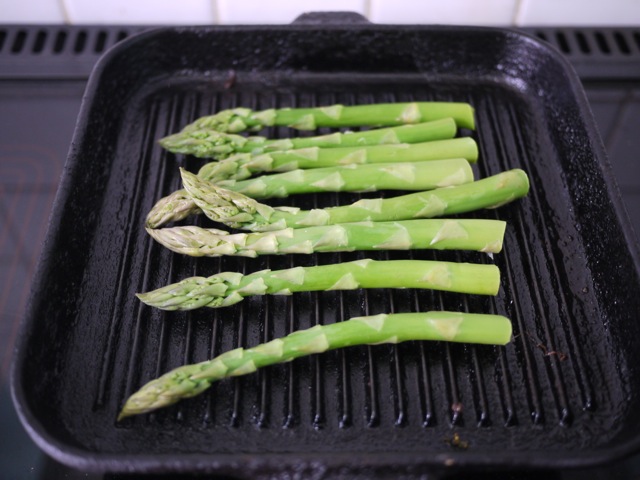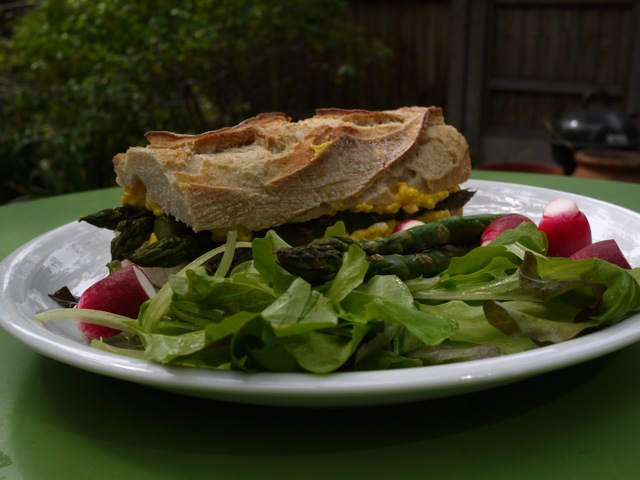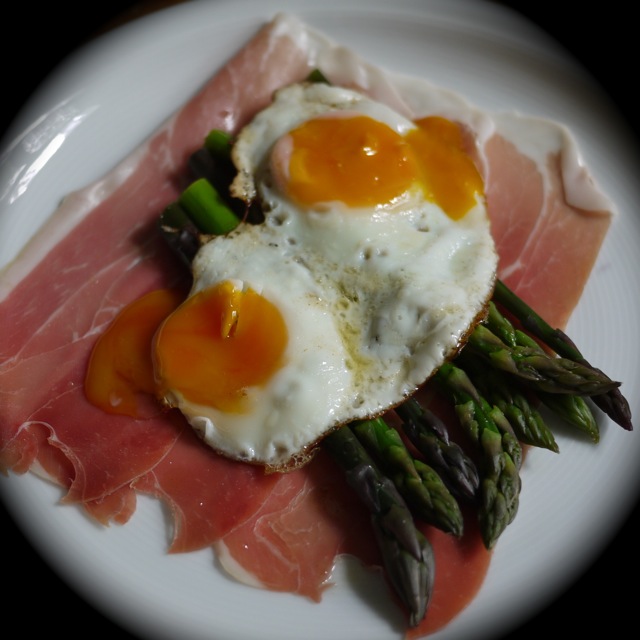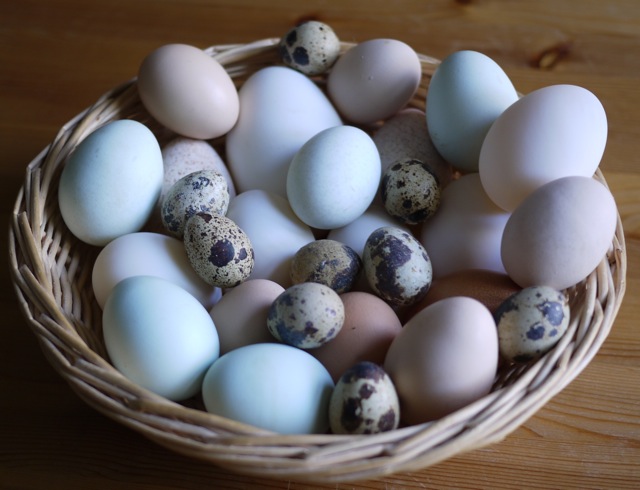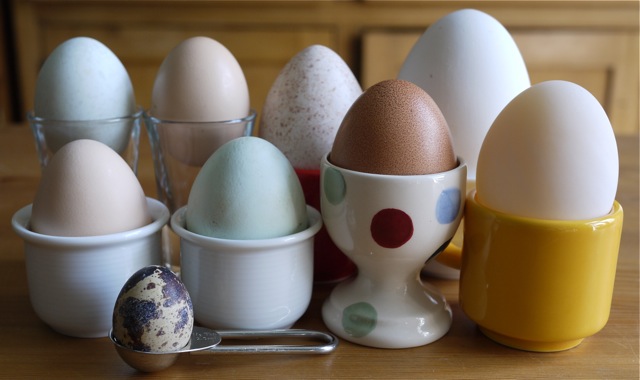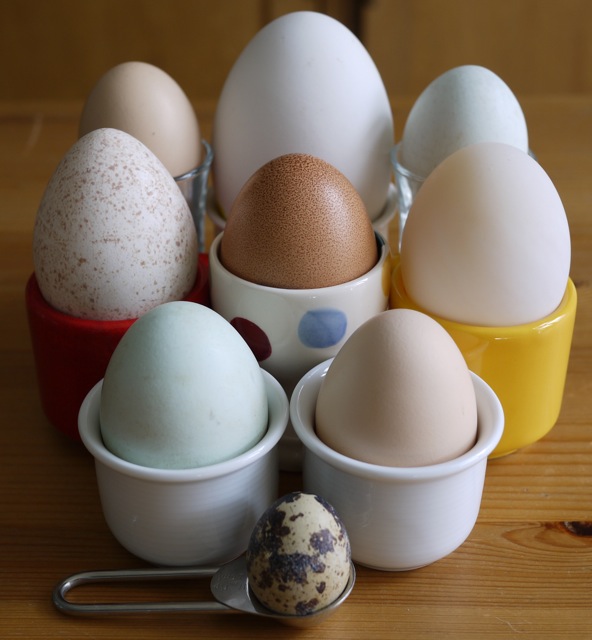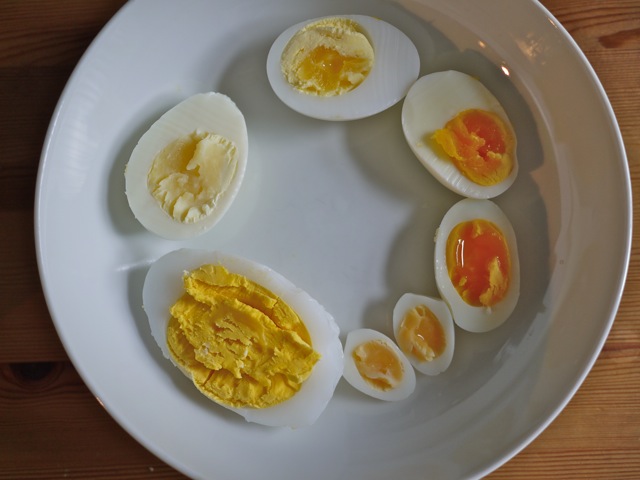When I was doing my kitchen and pantry tidy up I found all sort of things I had forgotten about.
Asparagus Rolls
I love asparagus. Really love it. I could eat it everyday for the duration of its short season and not get bored. In fact I would probably have it nearly the same way each time, nice and simple with good butter or oil. I might steam it, roast it or chargrill but I’d still dress it simply. I might have it with some cured ham or hard tangy cheese. But in the main I’d let the asparagus do all the talking.
And once the season was over that would be it. No more asparagus for a whole year. Because even more so than other vegetables asparagus loses much of its taste if its transported any distance. Not for me asparagus flown in from Thailand or Peru or Chile, it just doesn’t taste good enough to justify its price or its carbon footprint. The perfect situation for me would be to grow some in the garden but we don’t really have the space to create raised beds and London clay doesn’t make asparagus happy. I might dare to try it in a large tub and see how I get on; even a few home grown spears would be a wonderful thing to have. Until then though I’ll buy at local farm shops and PYO to get the best flavour. And I’ll eat and eat it until the season is done.
The short season usually starts in late April (traditionally St George’s Day) and lasts through to mid June though of course this is dependent on the weather during winter and early spring. Anywhere with sandy soil is good for asparagus growing and each well-known area from Formby in the North West to East Anglia and the Vale of Evesham stake their claims for being the best. Of course the best asparagus is what you can find that has been picked very recently and arrived in your kitchen quickly and landed on your plate ready to eat with minimal fuss.
Asparagus has always been prized and ‘The Neat House Gardens’ relates how the early market gardens surrounding London vied to produce asparagus as early as Candlemas by use of hot-bedding techniques and the liberal application of horse manure sent out from the city with the forced vegetables being sent back for consumption by the rich. Up to at least Mrs Beeton’s time asparagus continued to be forced and available from January. But at some point forced asparagus seems to have disappeared so either it didn’t taste much good or the cost became prohibitive, by the time Jane Grigson is writing about it in the 1970s there is no mention of it.
Times have changed in terms of cooking as well. Modern books suggest it takes about 8-12 minutes to steam whereas in the 1800s Acton, Beeton et al were saying 20-25 minutes of boiling and Grigson says it can take anywhere between 20-40 minutes. Goodness knows how big the spears needing 40 minutes were! Maybe the varieties grown have changed and we certainly seem to prefer our vegetable with lots more crunch than in the past but still 40 minutes seems extreme unless the aim was to make puree. Also common was to serve asparagus on toast to soak up some of the water from the boiling, steaming of course gets rid of this problem. And naturally the Victorians’ had special asparagus tongs for serving, mind you I think they had special cutlery for serving just about everything you can think of.
Recipe wise asparagus is often paired with eggs: hollandaise, dipped in boiled eggs, in omelettes, with fried egg in tapas, in tarts and quiches. Salty cheeses and cured meats also make great partners. Then there is the classic soup (which I have to confess I’ve never tried). Oh and of course with salmon or crab or chicken or….well almost endless possibilities. Googling ‘asparagus recipes’ gives 3.3 million hits so there is no shortage of ideas out there. One site I do recommend though is Fiona Beckett’s http://www.matchingfoodandwine.com/ which will help you pick the right wine to enjoy with your treasured asparagus; focus on how you are serving it to help you make a good choice.
Because you can easily find so many ways to serve asparagus I thought I’d offer you something a little different. Flipping through various books I found a recipe from Hannah Glasse in 1747. Here it is (complete with archaic spelling and quirks):
Asparagus forced in French Role
Take three French Roles, take out all the Crumb, by first cutting a Piece of the Top-crust off; but be careful that the Crust fits again the same Place. Fry the Roles brown in fresh Butter, then take a Pint of Cream, the Yolk of six Eggs beat fine, a little Salt and Nutmeg, stir them well together over a slow Fire, till it begins to be thick. Have ready a hundred of small Grass boiled, then save Tops enough to stick the Roles with; the rest cut small and put into the Cream, fill the loaves with them. Before you fry the Roles, make Holes thick in the Top-crust to stick the Grass in; then lay on the Piece of Crust, and stick the Grass in, that it may look as if it was growing. It makes a pretty Side-dish at a second Course.
Inspired by this I did:
Asapargus and Egg Rolls:
Serves 1 for lunch
1 crusty French roll or half a small baguette
8 spears of asparagus
1 large or two small eggs
Mayonnaise (fresh or your favourite shop bought)
Cut the top off the roll, remove some of the crumb or else you will face the dangers of squirting egg mayonnaise everywhere. Hard boil the egg(s) and make into a light egg mayonnaise with as little mayonnaise as will just bind the eggs. Part steam or blanch the asparagus and then finish on a chargrill. Slather the egg mayonnaise on both sides of the bread. Put the asparagus on the bottom part of the roll. Put the top of the roll back on. Serve with salad. Watch out for escaping egg mayonnaise.
This article was first published in Francoise Murat & Associates newsletter in May 2010.
Celebrate Norway Day with Kvikk Lunsj
Today is Norwegian Constitution Day.
And if you are looking for a way to celebrate why not have one of these with your tea or coffee.
And if you can’t find one you’ll just have to have a Kit-Kat instead.
Similar but not quite the same.
Hawthorn blossom
I went for a stroll in Wanstead Park earlier to look at the bluebells. The wood was carpeted with them but the light meant that the photographs weren’t as good as I had hoped.
Wanstead Park has several artificial lakes and ponds from the days when it was the gardens of a large and imposing Palladian house. The house if long gone, demolished to pay off the creditors amassed by the errant husband of the final owner in 1822. As we walked around the Ornamental Water with its twists, turns and islands we turned a corner to find a hawthorn standing on its own at the lake edge in full blossom.Wanstead Park is managed by the City of London as part of Epping Forest. It’s a lovely place to stroll or picnic and you can find out more here:
http://www.cityoflondon.gov.uk/Corporation/LGNL_Services/Environment_and_plan… and http://en.wikipedia.org/wiki/Wanstead_ParkEasy Lunch: Asparagus
I’ve said on here before how much I love asparagus and I’m very certain I will be saying it again before the season is over. Earlier in the week I went really simple with steamed asparagus and slithers of Ticklemore cheese popped under the grill until the cheese was just melting. The salty goats cheese was great with the asparagus. I didn’t take pictures though because I was so busy eating it.
Today I went for Parma ham, steamed asparagus and fried guinea fowl eggs.
Oh yum.
I don’t think you need instructions to be able to copy this, of course feel free to substitute the egg of your choice.
This week I am mostly eating asparagus from Norfolk.
Eggs-eptionally seasonal
This article was first published in Francoise Murat & Associates newsletter in April 2010.
We’ve just had Easter eggs, egg-decorating competitions at school and the hens are laying well again. With year round supplies of eggs in the shops we forget they are seasonal. We forget that when we talk of eggs we mean hen’s eggs. Anyone who keeps a few hens knows that during the winter they hardly lay at all and it takes until spring for them to get back to producing an egg a day. Jane Grigson talks of eggs as a rarity in the winter months and preserving them in late summer in isinglass to last through the autumn. Others cite coating eggs in wax to preserve them. Modern hen breeds produce up to 250 eggs per year but that’s still 165 days when they don’t lay, earlier breeds produced as few as 50 eggs.
Its not just hens eggs that are seasonal, now is the time to track down something different. It’s relatively easy to find duck and quails eggs in farm shops and markets, goose eggs are a bit more difficult to come by. Other eggs are harder to find. You need a good local source and then you might be able to try bantam, guinea fowl (not until June), gulls or pheasant and even turkey eggs. Friends and neighbours with a surfeit of eggs from now through until summer will be happy to share. Be sure to offer something in return, bird feed isn’t cheap even if the grass they have foraged on is free.
With this in mind I decided to collect a selection of eggs and do a little comparative taste test. I was able to get bantam and different hens’ eggs from friends. Duck, goose and quail I spotted at the farm shop but when I went back to get them someone had come in and snapped up 6 lots of 24 quail eggs, and all the duck eggs, that’s a lot of eggs. I bought a goose egg and then found Clarence Court sell duck and quail eggs via Ocado so I bagged some from there. On the ever-fascinating Twitter, I saw Sarah of Brays Cottage having scrambled turkey eggs for breakfast (as part of her Norfolk Diet) and she kindly got some more from her neighbour and sent them by post.
With my collection of eggs ready I pondered how to cook them for the taste test. Both old and new books listed a huge number of recipes and ways of cooking eggs. Treatises on egg farming, the science of cooking eggs, and eggs in different cuisines diverted me. I was reminded that Grimod de la Reynière says ‘The egg is …such an indispensable necessity that the most skilful cook will renounce his art if he is forbidden to use them’. After all the searching I decided simple was best. I planned a grand breakfast of soft-boiled eggs, then recalling how full I was last time I had goose egg for breakfast I decided hard-boiled was better as I could sample a slice of each and then save the rest for later.
But how best to boil an egg? Something so simple the British public was offended when Delia Smith promised to teach us. A little background reading of Harold McGee and Hervé This on the science of cooking eggs made me realise that it wasn’t quite as simple as it seemed. Hervé This investigates how to cook the perfect hard-boiled egg to ensure that: the shell doesn’t crack, the shell peels easily, the white isn’t rubbery, the yolk isn’t sandy, the egg isn’t sulphury and the yolk is centred!
Hervé This’ Perfect Hard-Boiled Eggs – as interpreted by me:
- Take one or more egg
- Prick egg on the wide end with a pin to make a small hole, this prevents cracking.
- Place egg in water that’s is between 70-90C i.e. not boiling.
- Cook at below 90C for the usual time for the type of egg; this cooks with no rubberyness, no sandyness or sulphur smells.
- During the cooking keep rolling egg over in the water, this keeps the yolk centred.
- Lift egg from the water and place in cold water, this stops the cooking.
- Place egg in vinegar for several hours, the shell will dissolve. I find that eggs that are slightly older peel more easily.
And the taste test. The main differences are in yolk and white colour and ratio. The tastes were almost indistinguishable. Good fun to try the different eggs though.
Leaning tower of ikea boxes
I am on a sort of mission to tidy up and sort out.
I don’t like tidying up or sorting out much. So I’ve been trying various tactics to make it seem more fun. Or possibly to delay the inevitable task. One tactic was to get some nice new shiny IKEA storage boxes. And because IKEA comes in flat pack you then have to make the boxes, which delays the moment when tidying has to begin. Here are all the ones I built this weekend.I’m not sure that’s going to be enough. I might need to go and get some more before I can begin.


